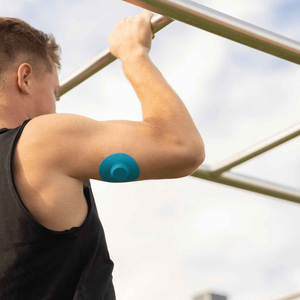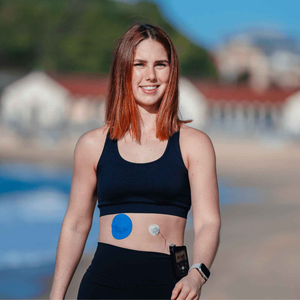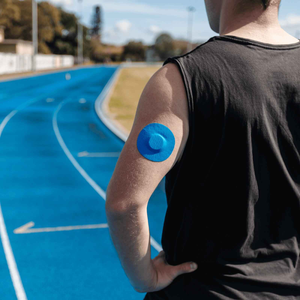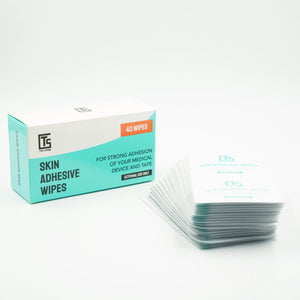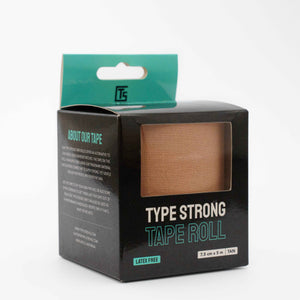Your morning routine might start the same way every day: brew, sip, check your CGM. But sometimes the readings don’t match your expectations. Even with black coffee – no sugar, no milk – your CGM blood sugar line can show a spike or dip. It feels confusing, and you might wonder if your CGM patch is slipping or if your body is just reacting differently.
The truth? Coffee and CGM blood sugar readings are more connected than many people realise. Caffeine can alter glucose response, and the effect isn’t the same for everyone. Let’s explore why this happens, what alternatives you can try, and how to manage it so your coffee habit and CGM data can work together.
Why caffeine can affect CGM blood sugar readings
Caffeine isn’t just a harmless energy boost. It interacts with your body in ways that can shift your blood sugar. For some, caffeine triggers a rise, while for others it leads to a slight dip.
Here’s why:
- Hormonal effect – Caffeine stimulates adrenaline and cortisol, hormones that can push blood sugar up.
- Insulin sensitivity – In some people, caffeine makes cells respond better to insulin, which can lower glucose.
-
Timing and stress – Morning cortisol is already high. Adding coffee on top can make your CGM show more dramatic swings.
The variability explains why you and a friend might both drink coffee and see completely different CGM graphs afterwards.
Why black coffee still shows up on your CGM
It’s tempting to think only milky or sweetened coffee would affect your sensor. But black coffee alone is active enough to make a difference.
Research supports this. The Mayo Clinic explains, "If you have diabetes, caffeine might affect the way your body uses insulin. And that could lead to higher or lower blood sugar. For some people with diabetes, about 200 milligrams of caffeine can cause this change. For others, it may have no significant effect on blood sugar."
That’s why your CGM may show a spike after your morning espresso, even though you didn’t add any sugar.
Common patterns CGM users notice with coffee
Everyday coffee habits influence CGM readings in slightly different ways.
|
Coffee habit |
Possible CGM effect |
Why it happens |
What you can try |
|
Morning coffee before breakfast |
Small spike |
Cortisol + caffeine raise glucose |
Pair with protein or fibre-rich snack |
|
Coffee after a meal |
Dip or steady |
Insulin sensitivity boosted |
Time coffee with breakfast or lunch |
|
Multiple cups daily |
Variable swings |
Hormone fluctuations + tolerance |
Limit to 1–2 cups, spread through the day |
|
Decaf coffee |
Minimal impact |
Very little caffeine stimulation |
Good alternative if spikes bother you |
How to tell if coffee is affecting your CGM
Coffee doesn’t affect everyone the same way, and sometimes it’s hard to know whether that little spike or dip on your CGM is from caffeine or something else. The best way to find out is to run small experiments:
- Compare “coffee days” vs “no coffee days” – Pick two mornings in the same week. On one, drink coffee as normal. On the other, delay it by two hours or skip it altogether. Look at your CGM trend line side by side.
- Try coffee with and without milk – Milk has natural sugars (lactose) that may affect your blood glucose. Test black coffee one day and milk coffee another to see if there’s a difference.
- Test timing – Drink coffee before breakfast one day, and after breakfast another. Your CGM may show that the spike is stronger on an empty stomach.
- Track for at least three days – Don’t make conclusions from just one reading. Hormones, sleep, and stress can all cause variation. Patterns over several days are much more reliable.

The aim isn’t to give up coffee, but to understand whether it consistently affects your readings. Once you know your pattern, you can choose whether to adjust timing, pairing, or type of coffee.
What to do if coffee disrupts your readings
If you notice your CGM consistently reacting after your morning brew, you don’t have to quit coffee altogether. Instead, you can manage the effect:
- Adjust timing – Drinking coffee after eating may reduce glucose spikes compared with drinking it on an empty stomach. A balanced breakfast with protein and fibre helps stabilise the effect.
- Pair coffee with food – A small snack like a handful of almonds, a boiled egg, or Greek yoghurt can soften caffeine’s impact on glucose levels.
- Space out your cups – Instead of having two coffees back-to-back, spread them across the day to avoid compounded hormone spikes.
- Stay hydrated – Caffeine is mildly dehydrating. A glass of water before or after coffee can help reduce cortisol response.
- Limit add-ons – Syrups, sugar, and creamers have carbs that add to the glucose change. If you want sweetness, consider cinnamon or a small splash of milk instead of sugar.
These adjustments allow you to keep coffee in your life while avoiding unnecessary spikes on your CGM.
Alternatives if caffeine keeps interfering
Some people find that no matter what they try, caffeine always disrupts their readings. If that’s you, it doesn’t mean you have to give up the comfort of a warm drink. There are plenty of satisfying alternatives:
- Decaf coffee – Contains far less caffeine but keeps most of the taste and ritual. For many CGM users, decaf shows almost no glucose impact.
- Green tea or matcha – Lower caffeine levels than coffee, plus beneficial antioxidants that may support overall metabolic health.
- Herbal teas – Rooibos, chamomile, or peppermint give the warm comfort of coffee without the caffeine stimulation.
- Golden milk (turmeric latte) – A caffeine-free, soothing option that offers anti-inflammatory benefits.
Switching doesn’t need to be all or nothing. Some people enjoy regular coffee in the morning and swap to herbal or decaf options in the afternoon. This way, you keep the enjoyment but reduce caffeine’s impact on your CGM blood sugar readings.
How to manage your CGM patch during coffee routines
Coffee itself won’t damage your patch. But the routine around it – morning showers, exercise, or rushing out the door – can loosen your adhesive and affect sensor accuracy. That’s why it’s worth giving your patch a little extra support in the morning:
- Start with proper skin prep – Wash the site with fragrance-free soap, dry thoroughly, and avoid lotions. Proper skin prep makes the biggest difference in adhesion.
- Use adhesive wipes – If you find your patch starts peeling after a hot shower or workout, adhesive wipes add an extra layer of grip and keep edges sealed.
- Choose the right patch – A breathable, medical-grade CGM patch protects your sensor without irritating skin.
- Bundle for peace of mind – If mornings are hectic, keeping a product bundle of spare patches and wipes ensures you’re never caught off guard.

With good prep and the right products, you can enjoy your coffee knowing your CGM data is accurate – not affected by a patch starting to peel.
People also ask
Does caffeine affect CGM readings?
Yes – caffeine can cause rises or dips in blood sugar depending on your personal response.
Why does my CGM show a spike after black coffee?
Even without sugar, caffeine triggers stress hormones that can temporarily raise glucose.
What can I do if coffee spikes my blood sugar?
Pair coffee with food, change timing, or switch to decaf to see if spikes reduce.
Is decaf better for CGM accuracy?
Yes. Decaf usually has little impact because caffeine is the main factor influencing glucose response.
How do I stop my CGM patch peeling during morning routines?
Focus on skin prep, use adhesive wipes, and choose strong CGM patches that hold up against heat and moisture.
Final thoughts
Coffee and CGM blood sugar readings can sometimes feel like a mystery, especially when you drink it black. But the changes you see aren’t random. They’re your body’s way of responding to caffeine and hormones, and they often follow patterns you can learn to manage.
By experimenting with timing, pairing coffee with food, or exploring alternatives like decaf, you can enjoy your brew without worrying that it’s throwing off your CGM. And by keeping your sensor patch secure with the right prep and protection, you’ll know your data is accurate.
Your CGM is there to guide you, not restrict you – and coffee can stay part of your day once you understand how the two interact.
